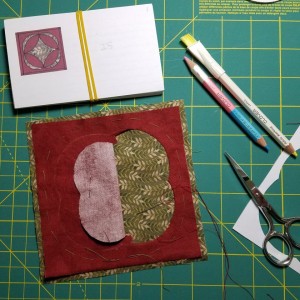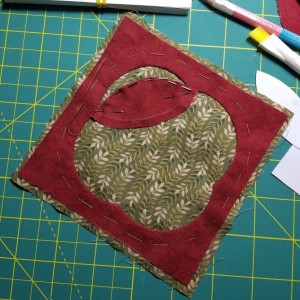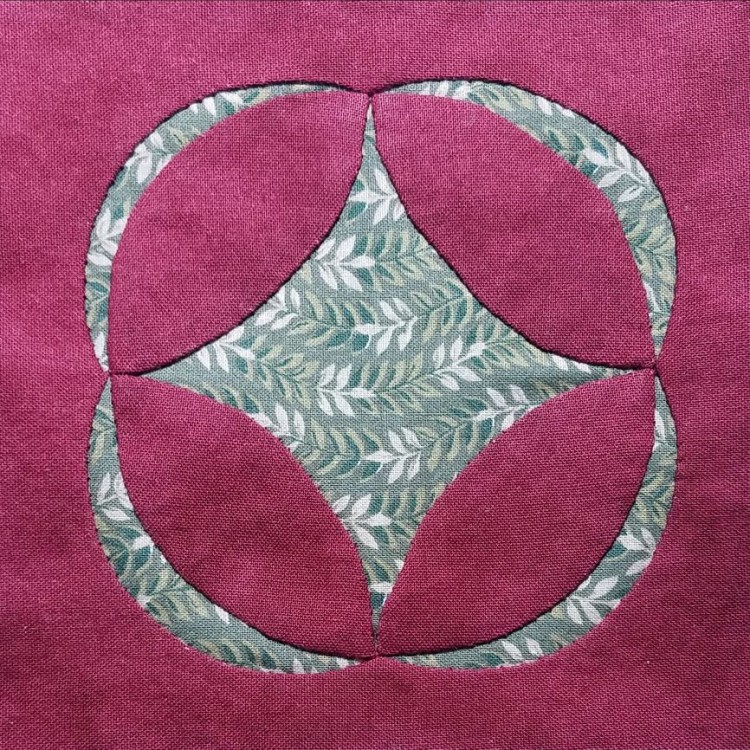When I first saw this quilt block last year, I wondered how I was going to cram so much seam allowance under those narrow pea pod shapes when I appliquéd them. It seemed like an impossible task.
Several months later, when I finally sat down to work on the block, I’d learned a few things about appliqué … or more specifically, about reverse appliqué. Armed with that knowledge, I opted to use more than one appliqué technique, in order to work with the pea pods instead of against them.
First, I reverse appliquéd the outer red “border” onto a large piece of the green fern print. Here is that process in progress:

Proving even further that this is not my first appliqué rodeo, I cut that fern fabric square a half inch bigger than it needed to be in each direction. Another thing I have learned is that the background fabric tends to shrink up as you appliqué on more shapes (I’m sure it doesn’t actually shrink, but I think it must bunch up underneath those shapes … maybe I’m pulling the stitches too tight).
Next, I “forward” appliquéd the four melon shapes (I’m an old hand at those too, by now) on to the green fabric. Here’s the first melon being put in place:

I was a little worried about lining up the points of the melons with the points on the border, but it went together surprisingly well. I would start at one end of the melon, to be sure to get at least one point in the right place. After sewing a couple of stitches to hold that end in place, I would wiggle the other end of the melon around until it was in the right vicinity and pin it in place.
The one tricky thing about these particular melons is that one side has a shallower curve than the other; the curve on the pea pod side of the melon is deeper than on the other side. I had to label each piece carefully and make sure I wasn’t putting them on backwards.
My efforts paid off; the melons lined up well with the points of the border piece, and voila! Pea pods were created without needing to stuff any seam allowance underneath them at all.
This approach had the added bonus of using one single piece of the patterned green fabric, so there was no need to match the pattern between the four pea pods and the center diamond … they were all made from one continuous piece.
When I went to photograph the block for this article, the melon shapes looked off kilter (why is the camera lens so much less forgiving then the “lens” of the human eye? I blame nearsightedness.). I spent a lot of time measuring and holding up the melon pattern pieces against the finished block, trying to decide if I had sewn any of them on backwards.
In the end, I decided the problem was with the fabric itself. I think the wavy lines of the green fern fabric are creating an optical illusion, making the melons look like they’re not properly aligned. That’s my story and I’m sticking to it.
